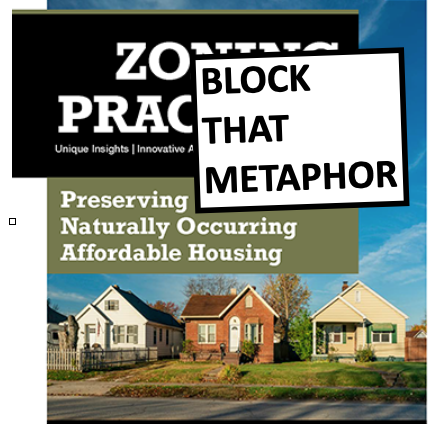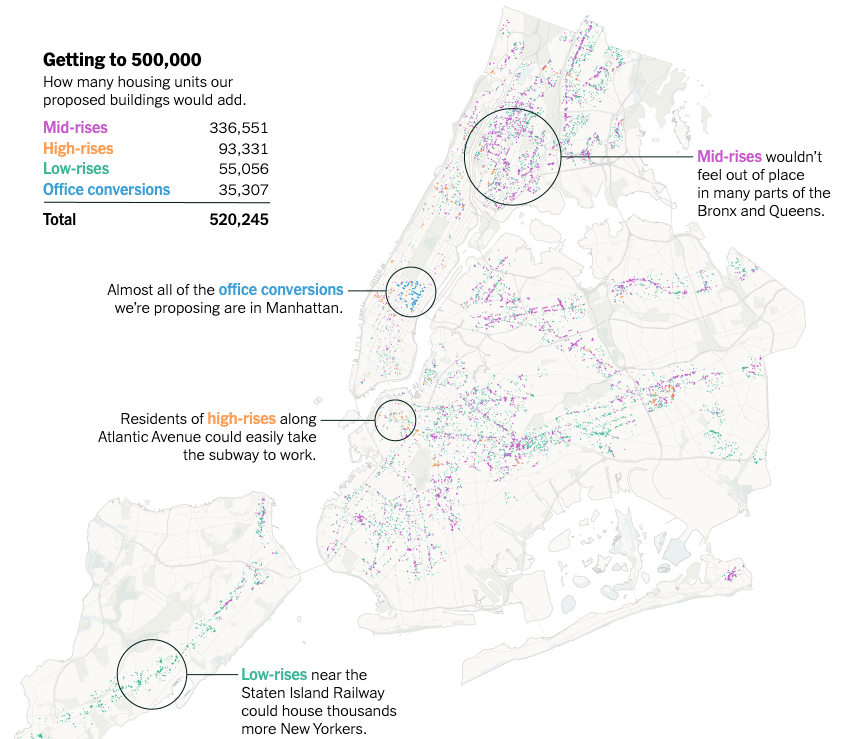What City Observatory did this week
The pernicious myth of “Naturally Occurring” Affordable Housing. One of the most dangerous and misleading concepts in housing reared its ugly head in the form a a new publication from, of all places, the American Planning Association. The publication “Zoning Practice: Preserving Naturally Occurring Affordable Housing” purports to offer advice on how to maintain affordability by preventing new development in neighborhoods with smaller, older single family homes. The publication observes because of their size and age, such homes sell or rent for less than new housing, and mistakenly asserts that preventing them from being enlarged, improved, or replaced—especially with apartments—would some how preserve affordability. The reality is, of course, the opposite.
The myth at hand is the idea of “naturally occurring affordable housing.” As we’ve long pointed out at City Observatory, that’s a wrong-headed metaphor. Housing doesn’t “occur naturally” it is the product of a complex and interactive legal and economic system. If older housing becomes cheaper, it’s only because we allow more new housing to be built. When zoning preserves smaller older homes, it restricts the supply of housing and drives up rents and home prices. The reason 1,000 square foot, 1950s ranch houses in Silicon Valley sell for over $1 million, and never became “naturally occurring affordable housing” the way they did in other cities has everything to do with the zoning and other restrictions that “preserved” these homes and prevented enough new housing getting built. The pursuit of “NOAH” is a leeches and bleeding prescription for the nation’s housing affordability problem.
Must Read
How to make room for a million more New Yorkers. Architect and planner Vishaan Chakrabarti shows that New York could build another half million or more apartments–enough to accommodate a million more residents, in areas with great transit service in New York City. A mix of high rise, mid-rise, and low rise apartment buildings, and office conversions would create additional housing opportunities in all five boroughs. Chakrabati says:
“We found a way to add 520,245 homes, enough to house more than 1.3 million New Yorkers, near transit, and away from flood zones, all while maintaining the look and feel of the city.”
The increased housing supply would moderate rents, and a million more people would stimulate the economy. Chakarbarti’s analysis is important because it provides a detailed and concrete description of what more housing would look like across the city. It emphasizes that a “Yes in my backyard” solution to housing affordability can be accomplished with a city-wide strategy that adds more homes while retaining a city’s character. This is the kind of planning exercise more cities need to undertake.
To fight climate change, reduce car travel. A new report from the Rocky Mountain Institute makes the case that improving active transportation, public transit and building more walkable communities would not only reduce carbon emissions, but would save peoples lives and save households money.
Too often, fighting climate change gets treated as a purely technological challenge of converting vehicles to less polluting energy sources. The RMI report points out that vehicle electrification isn’t enough by itself, and isn’t happening fast enough to reduce greenhouse gases from transportation, and that steps to reduce driving will also be needed. But, as the report points out, less driving comes with significant additional benefits in the form of fewer crashes, injuries and death, less air pollution, improved health from greater walking and biking, and, on top of all this, financial savings for households from lower transportation expenses. Our car dependent transportation system has posed economic as well as ecological costs:
The high price of car ownership is personal to many Americans. With stagnant real incomes and no choice but to drive, gas money can come at the expense of rent, healthcare, nutrition, education, and recreation. The US transportation system wasn’t built with these tradeoffs in mind. From relentless road expansions to zoning and land use policies that encourage sprawling, car-dependent communities, policymakers have long viewed car ownership as a benefit in-and-of itself, rather than the burden many Americans know it to be.
The report’s title sounds a hopeful tune: “Drive Less and Live More.” It’s the kind of upbeat approach that is needed to tackle climate change.
In the News
StreetsblogUSA republished our commentary on USDOT’s publication of flawed traffic data purporting to show a big decline in trip-making in the US.
Clark County Today republished City Observatory’s analysis of the rising cost of the proposed Interstate Bridge Replacement project, which is now likely to cost as much as $9 billion.
City Observatory Director Joe Cortright is quoted in the Capital Chronicle’s story on ODOT’s chronic short-changing of road maintenance as it spends profligately on highway expansions.



